Art
Advertising
- Advertising
- Tin (Cassiterite) Distribution: Mediterranean Bronze Age
- Archaeological Sites of the Aegean Minoans
- Extent of Santorini Eruption's Tsunami Inundation of Minoan Crete
- End of Minoan Linear A Writing and LM IB Fire Destruction of Crete
-
Nature Geoscience Journal and
Late Minoan IB Destruction Event -
The Cause of the End of the Bronze Age
with the Scientific Method - Prehistoric Star Navigation, Eastern Mediterranean Ethnocentric Bias, and the "Cabal of Certainty"
- Theoretical Bronze Age Minoan Heliographic Aegean Network Validated by 92.15 Mile (148.3 Km) Mirror Sunlight Flashes
- The Validation of a Bronze Age Minoan Heliographic Aegean Network in Southern California
- Tsunami Generation from the Titanic Bronze Age Minoan Eruption of the Santorini Marine Volcano
- The Cento Camerelle Mines of Tuscany: A Major Bronze Age Source of Tin
- No Men or Sails Required: Successful Prehistoric Sea Travel
- Minoan Downfall and Volcanology's Black Hole of Unknowns
- Homer and Navigating by the Stars in Prehistory
- Primacy of Human Powered Rowing in Copper Age and Minoan Shipping
- Minoan Invention of the True Dome and Arch Prehistoric Mediterranean Catenary Architecture
- "Sinking Atlantis" Tsunami Myth Debunked
- Minoan Tholos Structural Mechanics and the Garlo Well Temple
- Minoan Web of Mirrors and Scripts
- Santorini Eruption and LM IB Destruction
- Minoan Catastrophe: Pyroclastic Surge Theory
- Early Minoan Colonization of Spain
- Origin of the Sea Peoples
- Minoan Ship Construction
- Minoan Maritime Navigation
- Ringed Islands of Thera, Santorini, Greece
- Minoan Scientific Tradition
GIS Google Earth
Publications
Publications
Official Art Gallery
A Collection of 20 Paintings each with over 70 Art Products
If you believe the Early Minoan tholos tombs were free-standing, above-ground domes fully vaulted in stone as many now do given the evidence of the relatively well preserved Tholos Tomb Gamma from the Archanes cemetery of Phourni (Sakellarakis, 1997) and the extensive collection of Bronze Age tholos structures found throughout the Mediterranean in the Aegean, Spain, Sardinia, etc. that are still standing then it has to be recognized that these masonry structures must adhere to the equilibrium and stability principles of modern architecture.

Pylos Tholos Tomb - c. 1550 BC
Messinia, Peloponnese, Greece
Credit: Dan Diffendale
Messinia, Peloponnese, Greece
Credit: Dan Diffendale
In 1675 the English scientist and architect Robert Hooke was the first in historical times to describe what became known as the ideal "Catenary" form for an arch (or a dome which is simply a three dimensional arch created by rotating it about its central axis) by intuitively coining the phrase - "As hangs the flexible line, so but inverted will stand the rigid arch" or in more modern terms - "As the chain hangs in tension, the arch stands in compression". Johann Bernoulli, Gottfried Leibniz, and Christiaan Huygens each independently derived the mathematical properties of this perfect catenary form and all three of their solutions were published in the Leipzig scientific journal Acta Eruditorum in 1691 the result of which is the general Cartesian equation: f(x) = a cosh (x/a).

Hanging String of Beads
Forming Two Catenary Curves
Forming Two Catenary Curves
"Hooke's insight is confirmed by the modern 'safe theorem' of the plastic theory of design. The laws of static equilibrium are paramount; the theorem states that if a set of internal forces in a masonry structure can be found that equilibrate the external loads, and which lie everywhere within the masonry, then the structure is safe - safe in the sense that it cannot collapse under those loads." (Heyman, 1999).
The catenary profile is the ideal mathematical form of arch for bearing a maximum of weight with the least amount of material. For any given arch, vault, or dome the resultant "lines of thrust" due to its weight and loading always take the shape of the inverted catenary. Therefore the optimal design of any arch should be one derived from a catenary form. This is exactly what was done with the Canaanite Fortification gate in the Mediterranean seaport of Ashkelon on the Levantine coast in the 19th or 20th century BC.
The catenary profile is the ideal mathematical form of arch for bearing a maximum of weight with the least amount of material. For any given arch, vault, or dome the resultant "lines of thrust" due to its weight and loading always take the shape of the inverted catenary. Therefore the optimal design of any arch should be one derived from a catenary form. This is exactly what was done with the Canaanite Fortification gate in the Mediterranean seaport of Ashkelon on the Levantine coast in the 19th or 20th century BC.

Bronze Age Ashkelon Fortification Gate
a True Arch with Catenary Analysis
Ashkelon, Israel
a True Arch with Catenary Analysis
Ashkelon, Israel
Recently another arched gate that obviously incorporates the catenary form has been discovered at the Bronze Age Argaric La Bastida site in Murcia, Spain which is claimed to be somewhat older than the Ashkelon gate. The top of this arch obviously could not have supported itself during construction and almost certainly some kind of falsework (wooden form, etc.) was used to hold the stones in place until the mortar fully set. Therefore it is not a corbelled arch like the well-dressed Ugarit postern gate which was built by simply stacking and cantilevering stone allowing it to be self-supporting during construction. The Argaric postern gate at La Bastida is doubtlessly a "true" arch in the fully modern sense.

Ugarit Postern Gate - A Corbelled False Arch
Ugarit, Syria
Credit: Disdero, 2008
Ugarit, Syria
Credit: Disdero, 2008

Argaric La Bastida Catenary Arched Gate, A True Arch
La Bastida, Murcia, Spain
Credit: ASOME-UAB 2012
La Bastida, Murcia, Spain
Credit: ASOME-UAB 2012
Bibliography:
W. Sheppard Baird, 2011, Tholos Structural Mechanics and The Garlo Well Temple
Bernoulli, J., 1691-92, "Lectures on the Integral Calculus", Translation by William A. Ferguson, 2004.
Besenval, R., 1984, Technologie de la voute dans l'Orient Ancien. 2 vols.Paris: Editions Recherche sur les Civilisations.
Gregory, D., 1697, Catenaria. Philosophical Transactions of the Royal Society 19, 231: 637-652.
Heyman, J., 1966, The Stone Skeleton. International Journal of Solids and Structures 2: 249-79.
Heyman, J., 1995, The Stone Skeleton. Structural Engineering of Masonry Architecture. Cambridge: Cambridge University Press.
Heyman, J., 1998, Structural analysis: a historical approach. Cambridge: Cambridge University Press.
Heyman, J., 1999, The Science of Structural Engineering. London: Imperial College Press.
Hooke, R., 1675, A description of helioscopes, and some other instruments. London.
Huerta, S., 2003, El calculo de estructuras en la obra de Gaudi. Ingenieria Civil 130: 121-33.
Huerta, S., 2004, Arcos, bovedas y cupulas. Geometria y equilibrio en el calculo tradicional de estructuras de fabrica. Madrid: Instituto Juan de Herrera.
Huerta, S., 2006, Galileo was Wrong, The Geometrical Design of Masonry Arches
W. Sheppard Baird, 2011, Tholos Structural Mechanics and The Garlo Well Temple
Bernoulli, J., 1691-92, "Lectures on the Integral Calculus", Translation by William A. Ferguson, 2004.
Besenval, R., 1984, Technologie de la voute dans l'Orient Ancien. 2 vols.Paris: Editions Recherche sur les Civilisations.
Gregory, D., 1697, Catenaria. Philosophical Transactions of the Royal Society 19, 231: 637-652.
Heyman, J., 1966, The Stone Skeleton. International Journal of Solids and Structures 2: 249-79.
Heyman, J., 1995, The Stone Skeleton. Structural Engineering of Masonry Architecture. Cambridge: Cambridge University Press.
Heyman, J., 1998, Structural analysis: a historical approach. Cambridge: Cambridge University Press.
Heyman, J., 1999, The Science of Structural Engineering. London: Imperial College Press.
Hooke, R., 1675, A description of helioscopes, and some other instruments. London.
Huerta, S., 2003, El calculo de estructuras en la obra de Gaudi. Ingenieria Civil 130: 121-33.
Huerta, S., 2004, Arcos, bovedas y cupulas. Geometria y equilibrio en el calculo tradicional de estructuras de fabrica. Madrid: Instituto Juan de Herrera.
Huerta, S., 2006, Galileo was Wrong, The Geometrical Design of Masonry Arches
December 11, 2012
W. Sheppard Baird
Copyright © 2007, 2024 W. Sheppard Baird
All Rights Reserved
All Rights Reserved
-

Knossos Palace Reconstruction
Crete, Greece
-
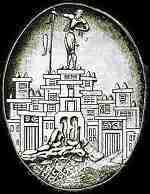
Master Seal Restoration
Chania, Crete, Greece
-

Arsenical Copper Bulls
Standard with Two Long-Horned Bulls
2400 - 2000 BC
Early Bronze Age III
North Central Anatolia
-

Egyptian Bronze Saw
Egypt, 1350 BC
-

Minoan Ladies in Blue Fresco
Knossos, Crete, Greece
-

Master Seal Impression
Chania, Crete, Greece
-
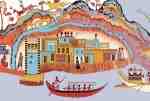
Minoan Miniature Frieze
Admirals Flotilla Fresco
Thera Restoration Scene
West House, Room 5, South Wall
Akrotiri, Santorini (Thera), Greece
-

Minoan Bronze Axe
Messara Plain, Crete, Greece
-

Copper Ingot
Crete, Greece
-

Minoan Gold Ring
Crete, Greece
-

Minoan Dolphins Restoration Fresco
Knossos, Crete, Greece
-

Minoan Gold Seal
Crete, Greece
-
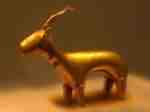
Golden Ibex
Akrotiri, Santorini (Thera), Greece
-
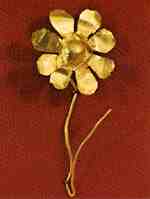
Minoan Golden Flower
Mochlos, Crete, Greece
-

Minoan Boxing Boys Fresco
Akrotiri, Santorini (Thera), Greece
-
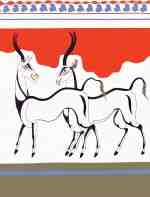
Minoan Antelope Restoration Fresco
Akrotiri, Santorini (Thera), Greece
-
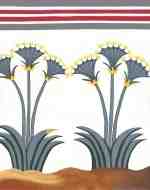
Minoan Sea Daffodils Lilies Restoration Fresco
Akrotiri, Santorini (Thera), Greece